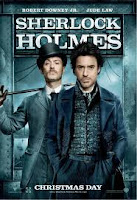Mark Twain’s Writing Space
You have done your outline, plotted your plot and filled out detailed character evaluations for your characters. It is now time to set up your writing space and get down to the business of tapping the keys.
First your writing space. Make sure it is a welcoming area that invites you back and makes you feel comfortable. Even if it is a crawl space under the stairs, make it yours. Find art, lighting and aromas that suit your senses. Make it comfortable and make sure you are using good posture as you write.
My friend, Tony Peckham (Invictus, Sherlock Holmes, etc.) tells a story of when he was on location in England shooting Sherlock Holmes and his hotel room had only one small “ledge” for him to place his laptop. 8 to 16 hours a day he wrote and rewrote in that nook. On the 11 day, he couldn’t get out of bed as his back had locked up from Quasamoting over the keyboard. He was bed ridden for a couple days while he received straightening exercises from an English chiropractor. Besides being in agony, he missed days on the set. Anything you didn’t like about that film happened while Tony was staring at the ceiling.
Your writing space should be one of joy and introspection. One where you can fill the walls with file cards and lay about dreaming up scenarios, but also get down to work without interruption.
Make sure you have water and snacks, so there is not an excuse to leave. I go to my writing space at a set time every day and stay there for a predetermined amount of time without leaving, taking calls or checking emails. When it is time to go, even if I am in the middle of writing the most spectacular sentences ever created, I stop and leave. That way you are always excited to come back. It also develops a biorhythm of your body that makes it tranquil to create.
With each new project, when it is time to start a new First Final Draft, I place on the wall:
 1. 3 x 5 note cards of each character. A family tree of sorts. This helps to make sure that no character is forgotten or left out. Each character is color coded (pink for girls, blue for boys, black for bad guys, white for good guys, etc.) One each one is the characters full name, age and a 2-10 word sentence of their purpose in the story.
1. 3 x 5 note cards of each character. A family tree of sorts. This helps to make sure that no character is forgotten or left out. Each character is color coded (pink for girls, blue for boys, black for bad guys, white for good guys, etc.) One each one is the characters full name, age and a 2-10 word sentence of their purpose in the story. 2. A one page of the plot and subsequent logline. This should be in at least a 30-point font as a reminder not to get off track. Writing this in sharpie or crayons makes it more inviting to your eyes.
 3. An erase board on the wall is where the story line resides. If it is a movie, it is time coded (15, 30, 45, 60, etc. minutes up to 120 or less). On top of the line is the description; below the line is the event. Example- inciting incident is on the top; “he falls off the waterfall” is on the bottom. Use this to fill in smaller plot points as well as big ones. The use of color-coded ink can help you plan multiple character journeys.
3. An erase board on the wall is where the story line resides. If it is a movie, it is time coded (15, 30, 45, 60, etc. minutes up to 120 or less). On top of the line is the description; below the line is the event. Example- inciting incident is on the top; “he falls off the waterfall” is on the bottom. Use this to fill in smaller plot points as well as big ones. The use of color-coded ink can help you plan multiple character journeys.4. The full character evaluations should be printed. Each character should have a different color paper. You print them all, punch one hole in the left top corner and place them on a key ring that is hung on the wall. That way they are available for you to flip through when you need to know a character trait.
Now your writing area is ready for you to create the world’s best Final First Draft.
Today’s Writing Exercise: (at least 500 words)
Imagine a room that is the most inspirational room you have ever been in and this one hosts a famous writer (dead or alive). I want you to write what advice that writer would give you and what advice you would give him.
Example: I am in the Bar Habana in Cuba drinking rum and smoking cigars with Hemmingway. He tells me to write gritty and scary, but with the simplest of language. I tell him to stop imbibing and go fishing (and I time travel back with Prozac so he won’t kill himself).



